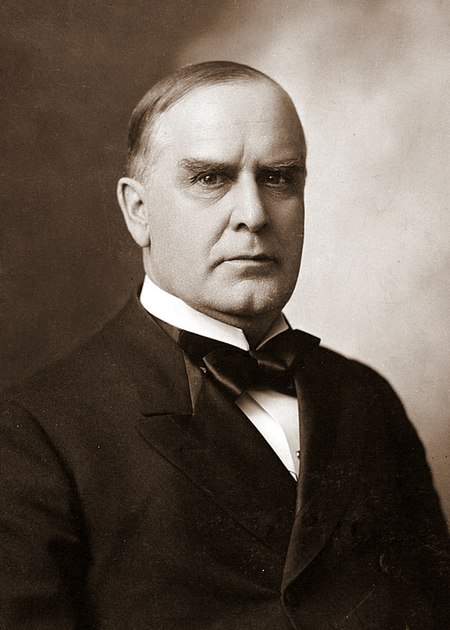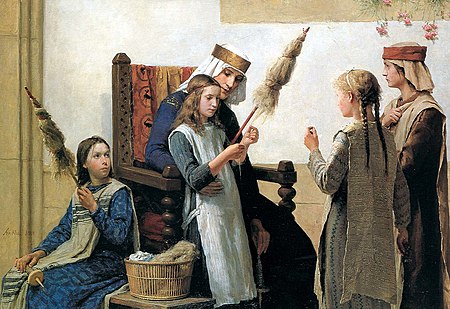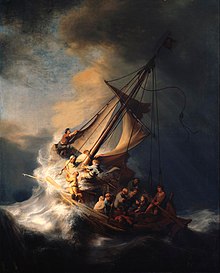Wär Gott nicht mit uns diese Zeit, BWV 14
| |||||||||||||||||||||||||||||||||||||||||||||||||||||||||||||||||||||||||||||||||||||||||||||||||||||||||||||||||||||||||||||||
Read other articles:

American college football season 2002 Louisiana–Lafayette Ragin' Cajuns footballConferenceSun Belt ConferenceRecord3–9 (2–4 Sun Belt)Head coachRickey Bustle (1st season)Offensive coordinatorRob Christophel (1st season)Defensive coordinatorBrent Pry (1st season)Home stadiumCajun FieldSeasons← 20012003 → 2002 Sun Belt Conference football standings vte Conf Overall Team W L W L North Texas $ 6 – 0…

العلاقات بين الإمبراطورية الروسية والولايات المتحدة [[{{{بلد1}}}]] [[{{{بلد2}}}]] تعديل مصدري - تعديل العلاقات بين الإمبراطورية الروسية والولايات المتحدة (1776-1922) تسبق العلاقات بين الاتحاد السوفياتي والولايات المتحدة (1922-1991) العلاقات بين روسيا والولايات المتحدة (…

伊斯兰合作组织Organisation of Islamic Cooperation(英語)Organisation de la Coopération Islamique(法語)منظمة التعاون الإسلامي(阿拉伯語) 旗帜格言:To safeguard the interests and ensure the progress and well-being of Muslims 成员国 观察国 暂停会籍行政总部 沙地阿拉伯吉达 官方语言阿拉伯语英语法语类型宗教成员国57个在籍成员国(英语:Member states of the Organisation of …

لمعانٍ أخرى، طالع جو أندرسون (توضيح). جو اندرسون معلومات شخصية الميلاد 26 مارس 1982 (العمر 42 سنة)إنجلترا مواطنة المملكة المتحدة الأب مايلز اندرسون الحياة العملية المدرسة الأم أكاديمية ويبر دوغلاس للفنون الدرامية [لغات أخرى] المهنة ممثل اللغات الإنجليز…

British politician (born 1944) Not to be confused with Margaret Hodges. The Right HonourableDame Margaret HodgeOfficial portrait, 2020Chair of the Public Accounts CommitteeIn office10 June 2010 – 30 March 2015Preceded byEdward LeighSucceeded byMeg HillierMinister of State for Culture and TourismIn office22 September 2009 – 11 May 2010Prime MinisterGordon BrownPreceded byBarbara FollettSucceeded byJohn PenroseIn office27 June 2007 – 3 October 2008Prime MinisterGor…

Cinema of theUnited Kingdom List of British films British horror 1888–1919 1920s 1920 1921 1922 1923 19241925 1926 1927 1928 1929 1930s 1930 1931 1932 1933 19341935 1936 1937 1938 1939 1940s 1940 1941 1942 1943 19441945 1946 1947 1948 1949 1950s 1950 1951 1952 1953 19541955 1956 1957 1958 1959 1960s 1960 1961 1962 1963 19641965 1966 1967 1968 1969 1970s 1970 1971 1972 1973 19741975 1976 1977 1978 1979 1980s 1980 1981 1982 1983 19841985 1986 1987 1988 1989 1990s 1990 1991 1992 1993 19941995 199…

Хроматические аберрации в простой линзе. Схема хода лучей различных длин волн в трёхлинзовом апохромате. Пример графика сдвига фокуса для различных длин волн в апохроматической линзе[К 1]. Апохрома́т — оптическая конструкция, у которой исправлены сферическая абер�…

Some numbers are believed by some to be auspicious or lucky (吉利, pinyin: jílì; Cantonese Yale: gātleih) or inauspicious or unlucky (不吉, pinyin: bùjí; Cantonese Yale: bātgāt) based on the Chinese word that the number sounds similar to. The numbers 6 and 8 are widely considered to be lucky, while 4 is considered unlucky. These traditions are not unique to Chinese culture, with other countries with a history of Han characters also having similar beliefs stemming from …

Dubai Tennis Championships 2007Sport Tennis Data26 febbraio – 4 marzo Edizione15a SuperficieCemento CampioniSingolare maschile Roger Federer Singolare femminile Justine Henin Doppio maschile Fabrice Santoro / Nenad Zimonjić Doppio femminile Cara Black / Liezel Huber 2006 2008 Il Dubai Tennis Championships 2007 è stato un torneo di tennis giocato sulla cemento. È stata la 15ª edizione del Dubai Tennis Championships, che fa parte della categoria International Series Gold nell'ambito dell'ATP…

Colombian revolutionary (1948–2011) This article needs additional citations for verification. Please help improve this article by adding citations to reliable sources. Unsourced material may be challenged and removed.Find sources: Alfonso Cano – news · newspapers · books · scholar · JSTOR (November 2011) (Learn how and when to remove this message) You can help expand this article with text translated from the corresponding article in Spanish. (Nove…

American ambassador and diplomat Brian W. ShukanUnited States Ambassador to Benin IncumbentAssumed office May 5, 2022PresidentJoe BidenPreceded byPatricia MahoneyCharge d’Affaires ad interim to SudanIn officeOctober 2019 – January 2022PresidentDonald TrumpJoe BidenPreceded bySteven KoutsisSucceeded byLucy Tamlyn Personal detailsAlma materUniversity of WisconsinNaval War CollegeWashington University in St. Louis Brian Wesley Shukan[1] is a career member of the Senior Fore…

Bilateral relationsCroatia-North Macedonia relations Croatia North Macedonia Croatia–North Macedonia relations are foreign relations between Croatia and North Macedonia. Two countries established diplomatic relations on 30 March 1992.[1] Croatia is represented in North Macedonia via its Embassy in Skopje and honorary consul in Strumica while North Macedonia is represented in Croatia via its Embassy and the Cultural and Informational Center in Zagreb as well as consulate in Rijeka and h…

This article contains translated text and the factual accuracy of the translation should be checked by someone fluent in Portuguese and English. Please see this article's entry on Pages needing translation into English for discussion. If you have just labeled this article as needing attention, please add{{subst:Needtrans|pg=Santana do Livramento |language=Portuguese |comments= }} ~~~~to the bottom of the WP:PNTCU section on Wikipedia:Pages needin…

Species of carnivore Hose's palm civet Conservation status Vulnerable (IUCN 3.1)[1] Scientific classification Domain: Eukaryota Kingdom: Animalia Phylum: Chordata Class: Mammalia Order: Carnivora Suborder: Feliformia Family: Viverridae Subfamily: Hemigalinae Genus: DiplogaleThomas, 1912 Species: D. hosei Binomial name Diplogale hosei(Thomas, 1892)[2] Hose's palm civet range Hose's palm civet (Diplogale hosei), also known as Hose's civet, is a viverrid species endemic t…

List of events ← 1896 1895 1894 1897 in the United States → 1898 1899 1900 Decades: 1870s 1880s 1890s 1900s 1910s See also: History of the United States (1865–1918) Timeline of United States history (1860–1899) List of years in the United States 1897 in the United States1897 in U.S. states States Alabama Arkansas California Colorado Connecticut Delaware Florida Georgia Idaho Illinois Indiana Iowa Kansas Kentucky Louisiana Maine Maryland Massachusetts Michigan Minnesota Mississipp…

Reservoir in New York, United StatesBog Brook ReservoirBog Brook ReservoirShow map of New YorkBog Brook ReservoirShow map of the United StatesLocationSoutheast, Putnam County, New York, United StatesCoordinates41°24′56.4″N 73°35′8.9″W / 41.415667°N 73.585806°W / 41.415667; -73.585806TypeReservoirPrimary inflowsBog BrookCatchment area4 sq mi (10 km2)Basin countriesUnited StatesSurface area379 acres (153 ha)[1]Average depth34 fee…

العلاقات السورية اللاوسية سوريا لاوس سوريا لاوس تعديل مصدري - تعديل العلاقات السورية اللاوسية هي العلاقات الثنائية التي تجمع بين سوريا ولاوس.[1][2][3][4][5] مقارنة بين البلدين هذه مقارنة عامة ومرجعية للدولتين: وجه المقارنة سوريا لاوس المساح�…

Disastro ambientale del fiume Lambrodisastro ambientaleSbarramenti sul fiume Lambro per fermare l'avanzare degli idrocarburi all'altezza del Parco Lambro TipoDisastro ambientale Data inizio23 febbraio 2010 Data fine27 febbraio 2010 LuogoFiume Lambro Stato Italia Coordinate45°35′57.09″N 9°18′08.11″E45°35′57.09″N, 9°18′08.11″E ConseguenzeDanniDanni ambientali al fiume Lambro Modifica dati su Wikidata · Manuale Disastro ambientale del fiume Lambro è l'espressione imp…

يفتقر محتوى هذه المقالة إلى الاستشهاد بمصادر. فضلاً، ساهم في تطوير هذه المقالة من خلال إضافة مصادر موثوق بها. أي معلومات غير موثقة يمكن التشكيك بها وإزالتها. (ديسمبر 2018) بطولة أمم أوروبا 2012 المجموعة جمعلومات عامةالرياضة كرة القدم الاتحاد الاتحاد الأوروبي لكرة القدم الفئة كر�…

Berta dari Swabia, oleh Albert Anker, 1888 Berta dari Swabia (sekitar 907 – setelah 2 Januari 966) merupakan Permaisuri Bourgogne. Ia adalah putri Burchard II dari Swabia dan istrinya Regelinda. Pada tahun 922, ia menikah dengan Rodolphe II dari Bourgogne. Adeleide dari Italia merupakan putri mereka. Putra mereka, Conrad I menggantikan Rodolphe II sebagai Raja Bourgogne. Setelah kematian Rodolphe (937), Berta menikah dengan Hugues dari Italia pada tanggal 12 Desember 937. Hugues meninggal pada…

